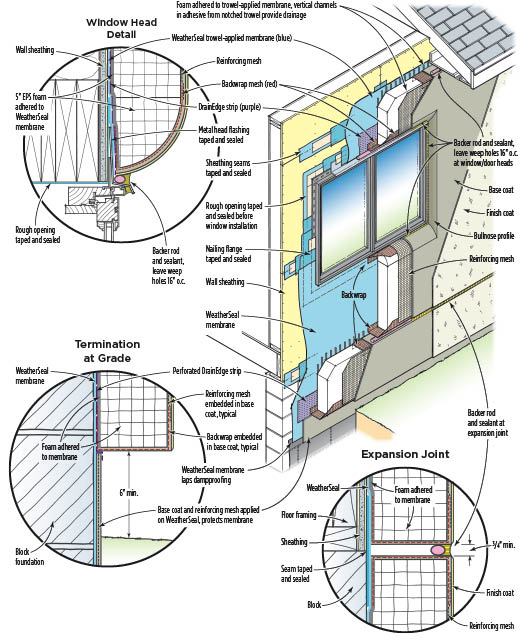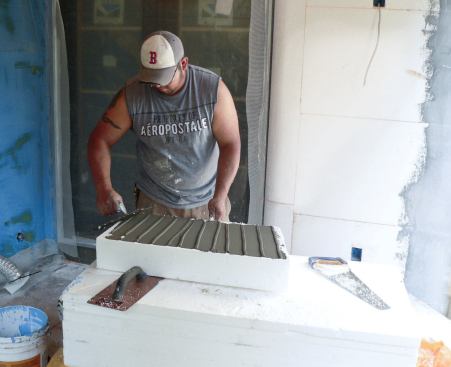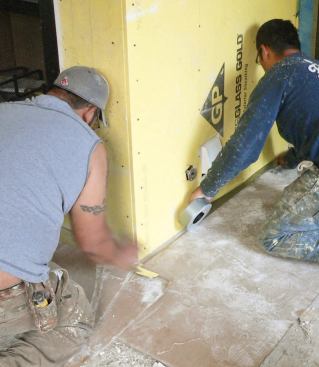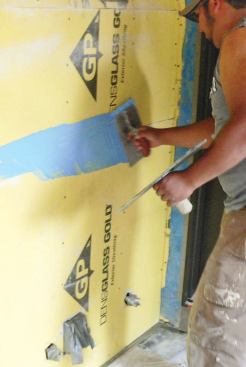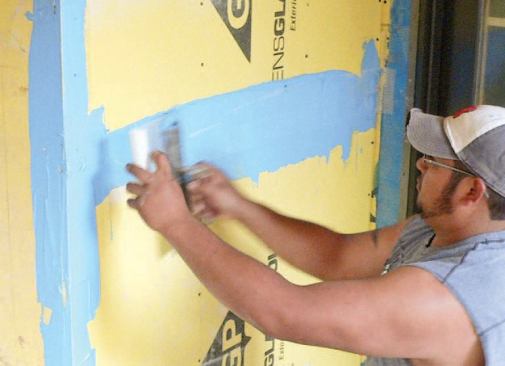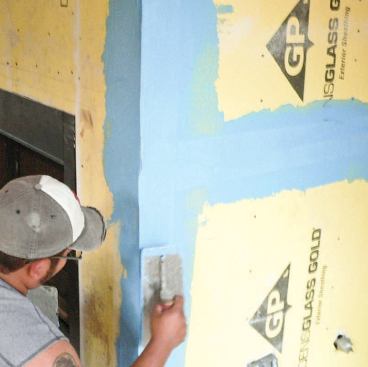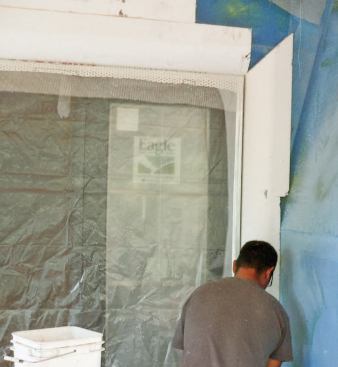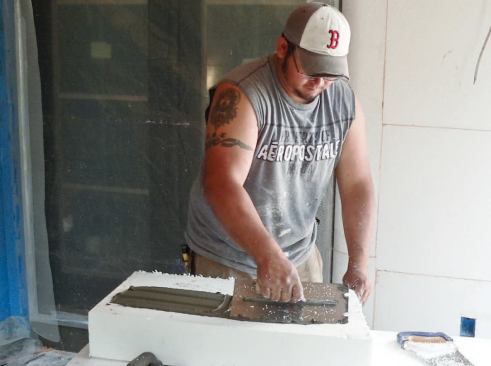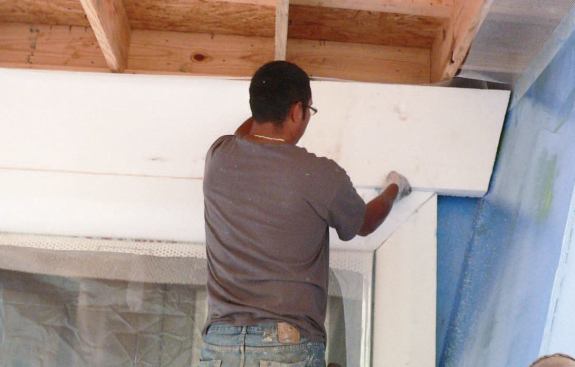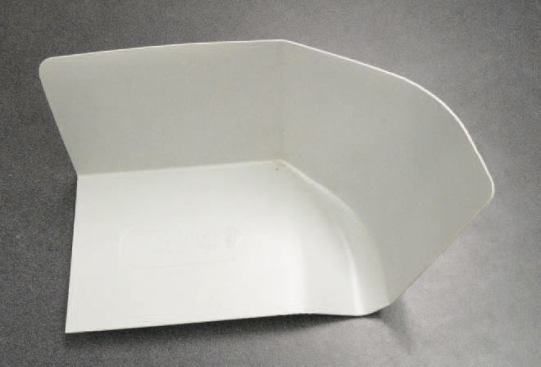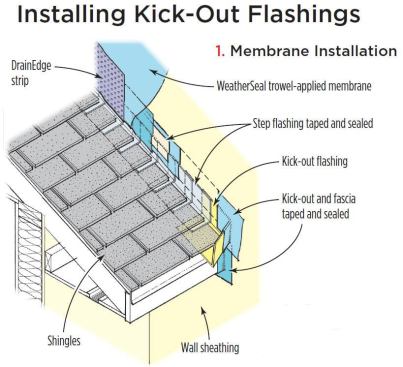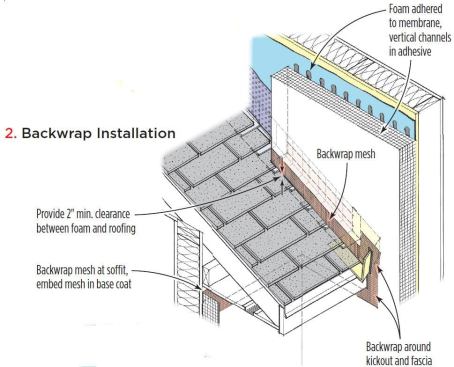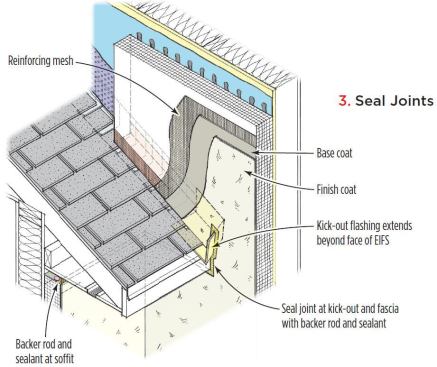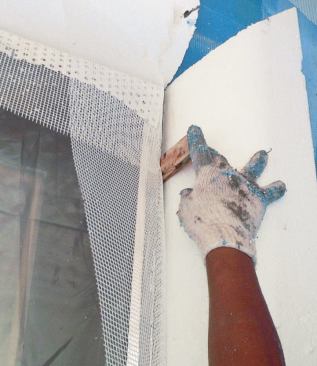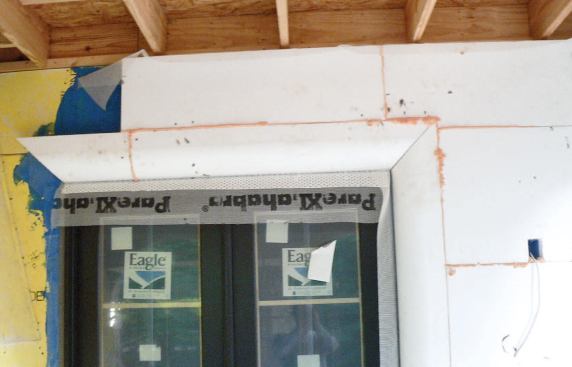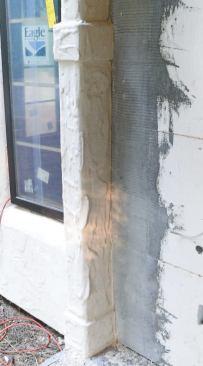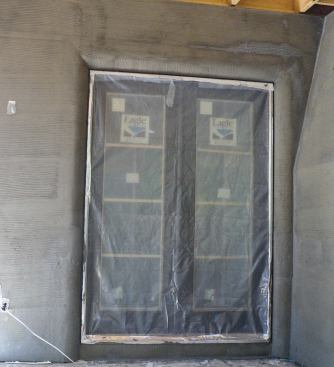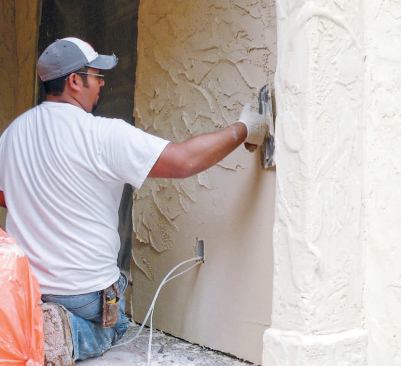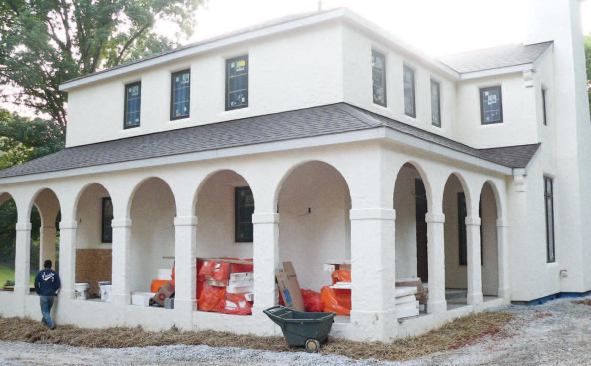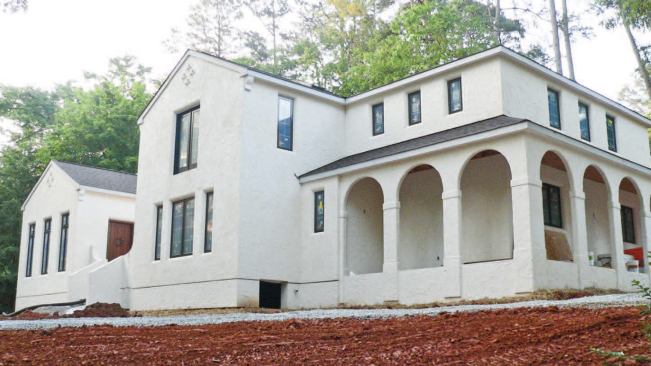Base Coat and Mesh
The adhesive we use to attach the panels to the wall usually dries in about 24 hours, so we can start applying the base coat to the foam the next day (see slideshow). On most surfaces, we use TeifsBase adhesive, but on sloped walls we use waterproof Parex WeatherDry, which comes premixed in a bucket.
Impact resistance. The standard mesh we embed in the base coat weighs 4 to 5 ounces per square yard and comes in 38-inch-wide rolls. It provides impact resistance and helps us screed the base coat. For high-impact areas, we use higher-tensile-strength meshes of up to 20 ounces per square yard. These meshes have a factory-applied coating that helps prevent the portland cement in the base coat from corroding the glass in the mesh.
The project shown here had several high-impact areas that didn’t need exterior insulation, like the porch columns and garage. In these places, we installed cement board over the gypsum sheathing. To provide a thermal break that would help prevent the framing from showing through the stucco finish coat, we specified 30-pound felt paper between the cement board and the sheathing. We used what is called a direct applied finish system — or DAFS — over the cement board, which includes fiberglass mesh embedded in a base coat. The same finish can be applied to both DAFS and EIFS base coats.
Applying base coat. We start with the backwrapping, troweling base coat onto the exposed EPS panel edges, pulling the previously stapled mesh around the corners, and then using the trowel to bed the mesh in the mortar. Next we double-wrap the inside and outside corners with 9-inch-wide reinforcing mesh, using a 90-degree corner trowel to smooth out the inside corners and give them clean, straight lines.
When we apply the field mesh, we trowel on vertical courses of 1/16-inch-thick base coat that are a little wider than our roll of 38-inch-wide mesh. We bed the mesh in the base coat with our trowels, working from the center out and overlapping adjacent courses of mesh by at least 1 1/2 inches. When we’re done, the surface of the base coat is smooth, with no mesh visible.
Primer and Finish
Primer is optional under some Teifs finishes and required under others. It’s basically an acrylic paint that rolls on quickly; we like to use it because it seals the surface of the cementitious base coat and reduces water absorption and the risk of efflorescence. It also improves the bond between the base coat and the finish.
One of the strongest selling points of EIFS is the wide range of standard and custom stucco finishes that I can offer to my clients. The owners of this home wanted a thick aged limestone finish coat with a deeply mottled surface. As we worked with them to fine-tune its appearance, we had trouble getting the thick finish coat to adhere to the thin — but very strong — base coat. So we doubled up the thickness of the base coat with another trowel-on layer, then scratched the surface horizontally with diamond mesh lath intentionally cut to give it a rough edge. The new scarified base coat performed like a scratch coat under a traditional stucco finish, making it much easier for the heavy 3/16-inch-thick finish coat to adhere to it (see slideshow).
Cost
We always provide our customers with a breakdown of our costs when we bill them for EIFS. That way, they know exactly what they are paying for line items like setup and scaffolding, the WeatherSeal membrane, EPS foam, finish, and any sealers.
Without a detailed set of plans, I avoid giving customers an exact square-foot quote for a finish because prices can range so widely, depending on the size of the house, the type of trim, and the number of door and window openings. A large house with few openings will cost significantly less per square foot than a small house with lots of windows and doors. But for an average house with an average number of openings, it costs between $1 and $1.75 per square foot to apply the WeatherSeal waterproofing system. On this project, we charged about $10 per square foot for the 5-inch-thick EIFS cladding and custom finish (see slideshow).
Barry Jenkins is a stucco contractor in Knoxville, Tenn.
